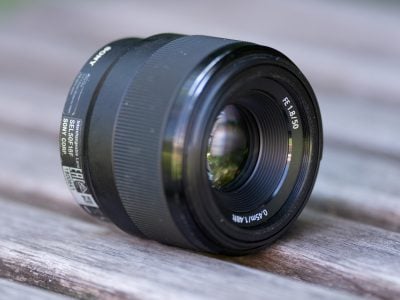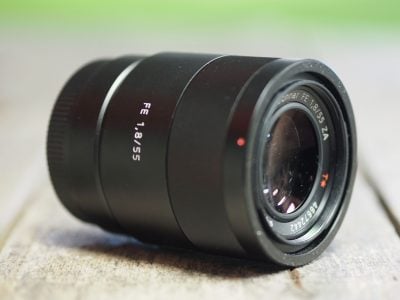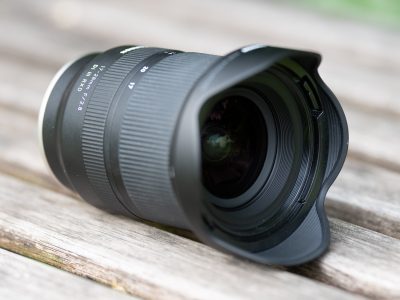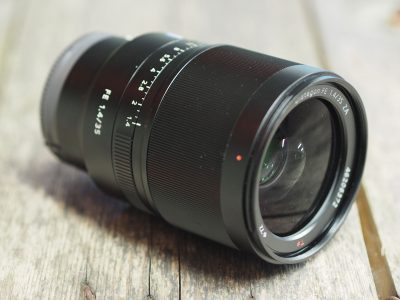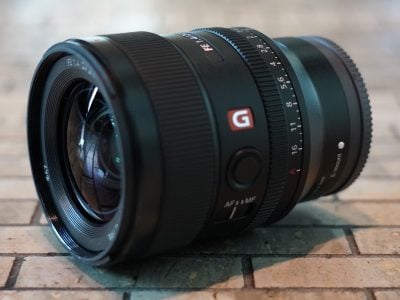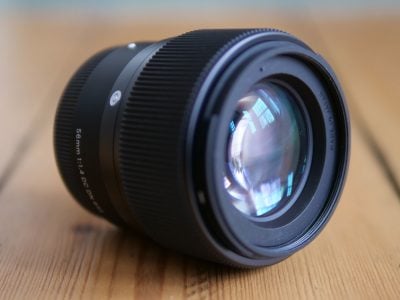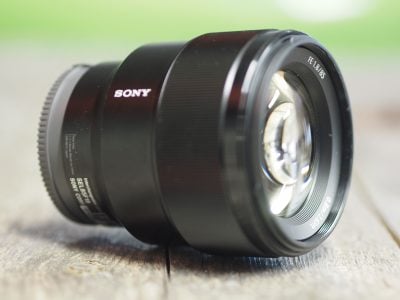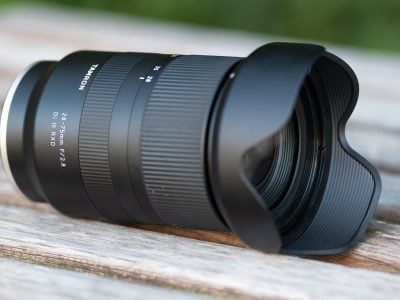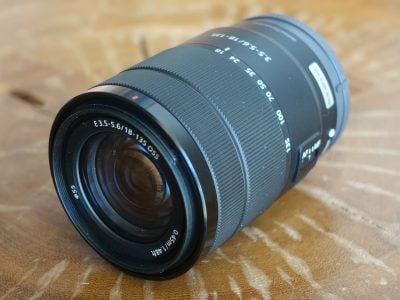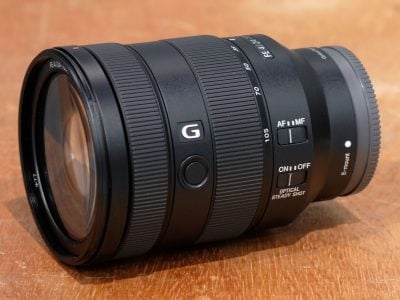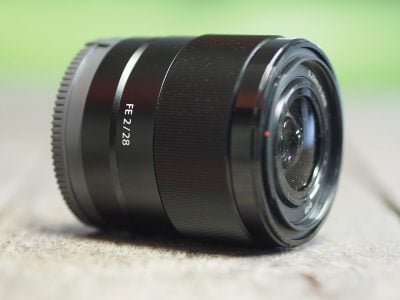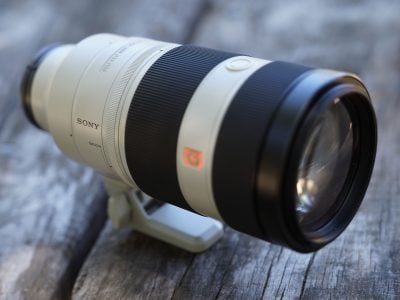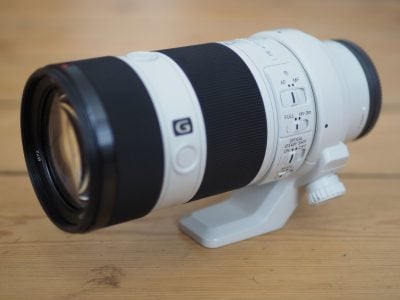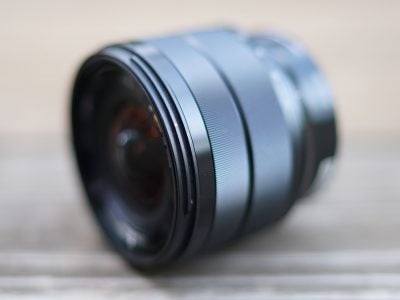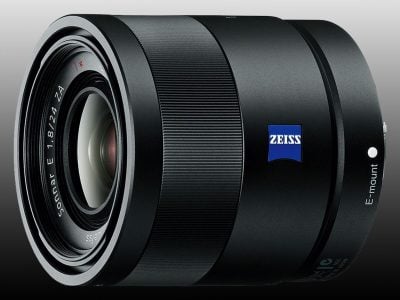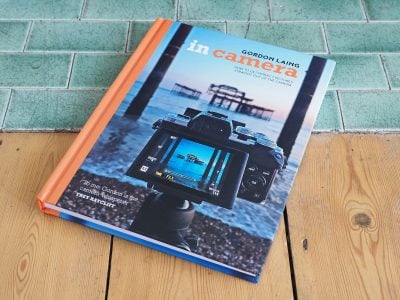Best Sony lenses 2023
Welcome to my Buyer’s Guide for Sony lenses! I’ll start with a quick guide to their ranges and what to look out for, followed by my personal suggestions for building a system, and finally a list of all the models I’ve reviewed or tested and can recommend. So if you’re looking for a Sony lens, you’ve come to the right place!
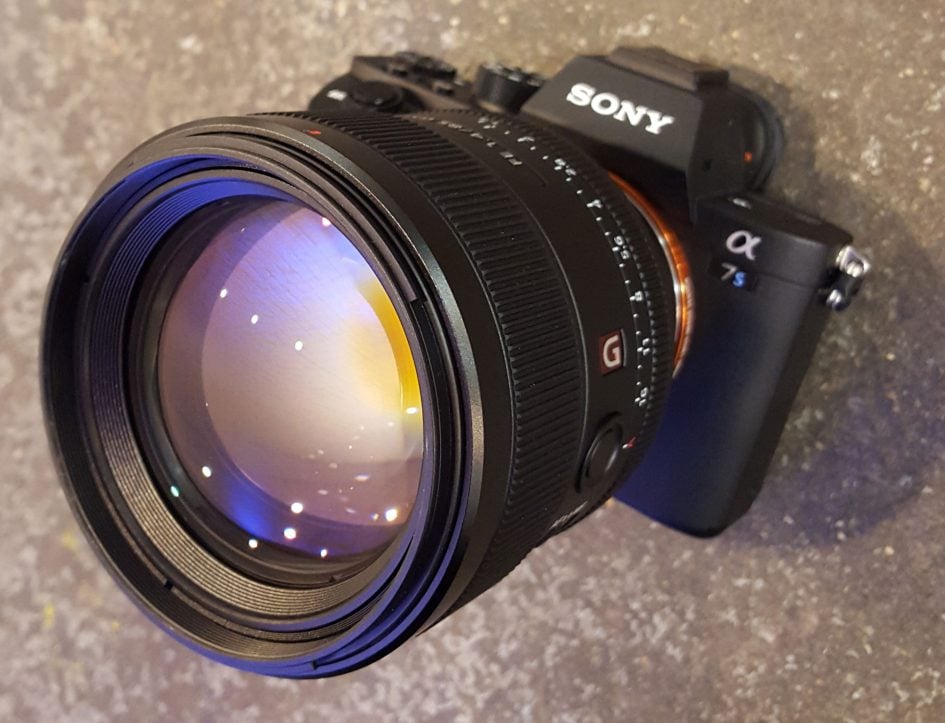
Sony lens terminology
Sony has two lens systems, one designed for its E-mount mirrorless cameras and the other for its older A-mount DSLR and SLT cameras. Older A-mount lenses can also work on E-mount mirrorless cameras using a Sony adapter, but for the best performance and greatest compatibility on mirrorless bodies, I’d recommend using native E-mount lenses when possible.
While Sony’s mirrorless lens mount is generically-known as the E-mount, the single letter E on a model name specifically refers to lenses that are only corrected for cameras with cropped APSC sensors, like the A6000 series, or full-frame bodies running in cropped / Super-35 modes; in either case, the crop reduces the field-of-view by 1.5 times, so a 50mm becomes equivalent to 75mm. Note older NEX bodies also employ cropped APSC sensors, but may not have the firmware to correct distortion on some of the latest lenses; they’ll still work, but you may see more distortion that you would on an A6000 series body.
Sony’s mirrorless lenses corrected for use on full-frame bodies like the A7 and A9 series, are labeled FE and have no reduction in their field-of-view when shooting in full-frame modes; these also work on cropped bodies or in cropped modes, albeit again with a 1.5x field-reduction. Sony’s A-mount lenses have SAL in their product codes, but models additionally labeled with DT are designed for bodies with cropped / APSC sensors.
As a general rule, if you have a full-frame Sony mirrorless camera, you should buy FE lenses, and if you have a cropped-frame Sony mirrorless camera, you can use either FE or E lenses; choosing FE will give you the option to use them on full-frame bodies if you upgrade in the future, but E models will be smaller, lighter and cheaper.
Within each series, Sony indicates its superior models by the letter G and names its flagship mirrorless lenses G Master or GM for short. Models involving a partnership with Zeiss are labeled ZA, and are generally pitched between Sony’s own G and GM lenses in quality. Meanwhile, lenses labeled PZ have a Power Zoom for smooth motorized zooming while filming, while those with OSS refer to Optical SteadyShot stabilisation. Phew, enough of the specs and now on to my recommendations; the text links in the next section take you to B&H to check prices, while links to my full reviews and sample galleries are lower on the page.
Recommended Sony lenses for cropped APSC bodies
If you own a cropped / APSC sensor body like the A6000 series, the best general-purpose lens is the Sony E 18-135mm, which represents a decent step-up in quality and range over the basic E 16-50mm kit zoom. If you’re willing to trade range for brightness, then there’s three main options with constant f2.8 apertures: the Sony E 16-55mm f2.8 is a great option for those on a bigger budget, but at a lower cost there’s also the Sigma 18-50mm f2.8 DC DN and the Tamron 17-70mm f2.8, the latter the largest of the three but including optical stabilisation. See my Sony E 18-135mm review, Sony E 16-55mm f.8 review and Sigma 18-50mm f2.8 DC DN review for more details.
If you’d like to shoot portraits with a blurred background, go for the Sony E 50mm f1.8 OSS which also sports optical stabilisation or the Sigma 56mm f1.4 DC DN which may lack stabilisation but delivered better results in my tests. If you prefer general-purpose shooting at 35mm equivalent, I’m very fond of the Sony E 24mm f1.8 ZA which boasts a bright aperture and close-focusing. If you favour a 50mm equivalent, then also consider the Sigma 30mm f1.4 DC DN or Sony E 35mm f1.8 OSS. If you’re into vlogging or ultra-wide angle photography, the Sony E 10-18mm is a great choice, or perhaps the Sigma 16mm f1.4 DC DN if you’re fond of 24mm equivalent coverage with a bright aperture, and if you want to get close to distant subjects without breaking the bank, then the Sony E 55-210mm is a good option. Telephoto shooters on a higher budget should weigh-up the Sony E 70-350mm and Sony FE 70-300mm, with the former giving more reach but the latter working with full-frame if you upgrade in the future; see my Sony E 70-350mm review for more details. There’s also the Sigma 100-400mm DG DN to consider. Finally, if you’d like the smallest shooting combo, consider the Sony E 20mm f2.8 or Sony E 16mm f2.8. Remember all lenses have their field-of-view reduced by 1.5 times when mounted on a cropped / APSC sensor body.
I’ll now move onto full-frame lenses, although remember all of them will also work on APSC bodies without an adapter, albeit again with a 1.5x field reduction.
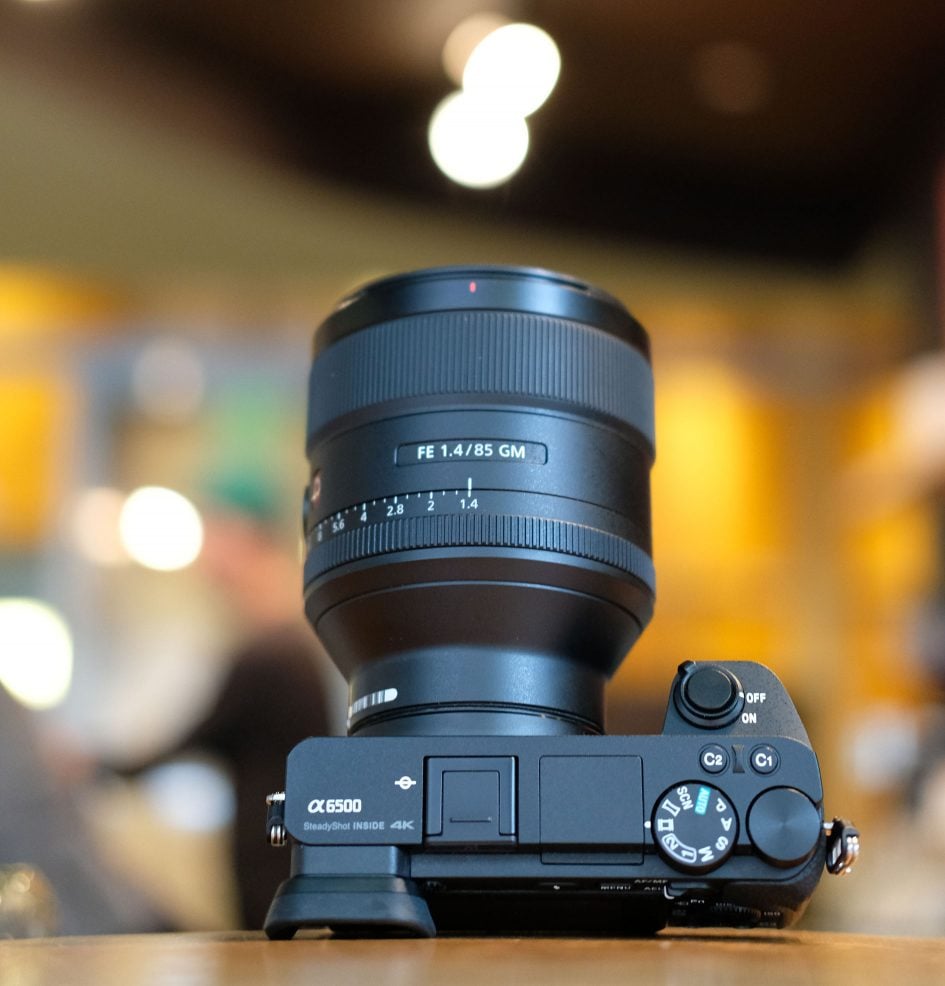
Recommended Sony full-frame lenses
If you own a full-frame mirrorless body like the A7 or A9 series, my favourite general-purpose zoom is the surprisingly affordable Sony FE 24-104mm f4G, although if you’re a pro event shooter, you may prefer to invest in a model with a constant f2.8 aperture. Most obviously there’s the Sony FE 24-70mm f2.8 GM, but look for deals as it’s one of the earliest G Master lenses and ripe for an update . Alternatively if you desire a general-purpose zoom with a f2.8 aperture at a lower price, check out the Sigma 24-70mm f2.8 Art DG DN which costs roughly the same as the FE 24-105mm f4, or if you can sacrifice some coverage at the wide-end, the Sigma 28-70mm f2.8 DG DN or Tamron 28-75mm f2.8 Di III RXD come in cheaper still; see my Sigma 24-70mm f2.8 Art DG DN review, Sigma 28-70mm f2.8 DG DN review and Tamron 28-75mm f2.8 Di III RXD review for more details. If you’re into an all-in-one super-zoom range, check out my Sony FE 24-240mm f3.5-6.3 review or Tamron 28-200mm f2.8-5.6 review, or for something truly unique, how about the Tamron 35-150mm f2-2.8.
If you’re looking for a standard lens with a 50mm or thereabouts focal lengths, there are plenty of options for Sony full-framers. If you’re on a tight budget, it’s hard to beat the entry-level Sony FE 50mm f1.8 on value and while it lacks the performance and finesse of the higher-end models, it’ll still deliver shallow depth-of-field effects at a low price; see my Sony FE 50mm f1.8 review for more details. At the other end of the scale, the best native 50mm I’ve tested is the Sony FE 50mm f1.2 GM, although the Sigma 50mm f1.4 Art comes close in many respects (even beating it in some) at a lower price, but I’d expect a truly native DG DN version in the near future; see my Sony FE 50mm f1.2 GM review and Sigma 50mm f1.4 Art review for more details. Alternatively if you’re looking for a compact 50mm prime lens that out-performs the budget model, then consider the Sony FE 50mm f2.5 G or the slightly wider Sony FE 40mm f2.5 G and Sigma 45mm f2.8 DG DN? See my Sony FE 50mm f2.5 G review and Sony FE 40mm f2.5 G review for more details. Some also remain fond of the older Sony FE 55mm f1.8 ZA, although I’d only choose it over the newer options now at the right price; see my Sony FE 55mm f1.8 ZA review for more details.
If you’re a portrait photographer looking for a short telephoto, Sony offers two FE 85mm lenses: the relatively low-priced Sony FE 85mm f1.8 and the high-end Sony FE 85mm f1.4 GM that’s very crisp; see my Sony FE 85mm f1.8 review and Sony FE 85mm f1.4 GM review for more details. In-between those models lies the Sigma 85mm f1.4 DG DN Art which delivers excellent performance for the money; see my Sigma 85mm f1.4 DG DN review for more details. If you prefer shooting tighter portraits or from a little further away, the Sony FE 135mm f1.8 G Master is one of the sharpest lenses I’ve tested; check out my Sony FE 135mm f1.8 GM review for more details.
Wide shooters are well-catered by the Sony FE 12-24mm f4G, Sony FE 12-24mm f2.8 GM, Sony FE 16-35mm f2.8 GM and the Sigma 14-24mm f2.8 Art DG DN, the latter offering particularly good value, although if you can sacrifice a little at the wide-end, the Tamron 17-28mm f2.8 Di III RXD is even cheaper and a perfect match for the Tamron 28-75mm f2.8; see my Tamron 17-28mm f2.8 Di III RXD review, Sigma 14-24mm f2.8 DG DN review, Sony FE 12-24mm f2.8 GM review and Sony FE 16-35mm f2.8 GM review for more details. If you’re willing to trade the flexibility of a zoom for a fixed focal length with a brighter aperture, then the Sony FE 14mm f1.8 GM, Sony FE 20mm f1.8 G and Sony FE 24mm f1.4 GM are impressively light, sharp and relatively affordable too compared to rivals; see my Sony FE 14mm f1.8 GM review, Sony FE 20mm f1.8 G review and Sony FE 24mm f1.4 GM review for more details. If milder wide-angle primes are your thing, then I can recommend the Sony FE 35mm f1.8, Sony FE 35mm f1.4 GM, Sigma 35mm f2 DG DN or the unusually bright Sigma 35mm f1.2 Art DG DN; check out my Sony FE 35mm f1.8 review, Sony FE 35mm f1.4 GM review, Sigma 35mm f2 DG DN review and Sigma 35mm f1.2 Art review for more details. Alternatively if you’re willing to sacrifice a little light-gathering power in return for a smaller and lighter lens, both Sony and Sigma have a bunch of compact primes to consider that are ideal for smaller bodies: check out the Sony FE 24mm f2.8 G, Sigma 24mm f2 DG DN or Sigma 24mm f3.5 DG DN (see my Sony FE 24mm f2.8 G review, Sigma 24mm f2 DG DN review or Sigma 24mm f3.5 DG DN review for more details).
Close-range sports or distant portrait photographers will aspire to the high-end Sony FE 70-200mm f2.8 GM II, while those who need greater reach for distant sports or wildlife will find the Sony FE 100-400mm f4.5-5.6, Sigma 150-600mm f5-6.3 DG DN and Sony FE 200-600mm all perform very respectably; see my Sony FE 70-200mm f2.8 GM II review, Sony FE 100-400mm GM review, Sigma 150-600mm f5-6.3 DG DN review and Sony FE 200-600mm review for more details. If you’re on a tighter budget, the Sony FE 70-300mm f4.5-5.6 and Tamron 70-180mm f2.8 Di III are popular choices, as is the Sigma 100-400mm f5-6.3 DG DN; see my Tamron 70-180mm f2.8 Di III review and Sigma 100-400mm f5-6.3 DG DN review for more details. Meanwhile for the big-budget pros out there the Sony FE 400mm f2.8 GM or Sony FE 600mm f4 GM will be tempting investments; see my Sony FE 400mm f2.8 GM review-so-far. And if macro photography is your bag, there’s Sony FE 90mm f2.8 Macro G or the Sigma 105mm f2.8 DG DN to choose from; see my Sigma 105mm f2.8 DG DN review for more details.
If you want to put together a system of primes without breaking the bank, I can recommend the Sony FE 28mm f2, Sony FE 50mm f1.8 and Sony FE 85mm f1.8 lenses, and if you want the smallest possible general-purpose combination, I’m very fond of the original Sony FE 35mm f2.8 ZA. If your budget is much higher, you can splash-out on three of Sony’s best prime lenses: the Sony FE 24mm f1.4 G Master, Sony FE 50mm f1.2 GM and Sony FE 85mm f1.4 GM will delight any lucky owner. If you want a triplet of top-end zooms, the Sony FE 12-24mm f2.8 GM, Sony FE 24-70mm f2.8 GM and Sony FE 70-200mm f2.8 GM II will take you from 12 to 200mm with a constant f2.8 focal ratio and G Master quality – expensive but very high-performance. Tamron also offers an alternative and more affordable approach to f2.8 zooms with the 17-28mm f2.8, 28-75mm f2.8 and 70-180mm f2.8. Meanwhile Sigma offers more affordable versions of the classic ranges, including a 14-24mm f2.8, and 24-70mm f2.8 – just look out for DG DN in the model name, indicating the latest versions in the native Sony mirrorless mount.
Keep reading for my detailed reviews of Sony lenses and sample image galleries! Check prices at Amazon, B&H, Adorama, eBay or Wex. Alternatively get yourself a copy of my In Camera book, an official Cameralabs T-shirt or mug, or treat me to a coffee! Thanks!
All my Sony lens reviews
- Sigma 24-70mm f2.8 DG DN II Art review
- Sigma 50mm f1.2 DG DN Art review
- Sigma 500mm f5.6 DG DN Sports review
- Tamron 70-180mm f2.8 Di III VC G2 review
- Sigma 10-18mm f2.8 DC DN review
- Sony FE 70-200mm f4 G OSS II review
- Sigma 14mm f1.4 DG DN Art review
- Zhongyi Mitakon Speedmaster 85mm f1.2 review
- Sigma 23mm f1.4 DC DN review
- Sigma 17mm f4 DG DN review
- Sigma 50mm f2 DG DN review
- Sony FE 50mm f1.4 GM review
- Sigma 50mm f1.4 DG DN Art review
- Sony FE 20-70mm f4 G review
- Sigma 60-600mm f4.5-6.3 DG DN review
- Tamron 70-300mm f4.5-6.3 Di III review
- Voigtlander 65mm f2 APO-Lanthar Macro review-so-far
- Tamron 50-400mm f4.5-6.3 Di III VC review
- Tamron 150-500mm f5-6.7 Di III VC review
- Viltrox AF 35mm f1.8 review
- Sigma 24mm f1.4 DG DN Art review
- Sigma 20mm f1.4 DG DN Art review
- Voigtlander 35mm f2 APO-Lanthar review
- Viltrox AF 24mm f1.8 review
- Voigtlander 50mm f2 APO-Lanthar review
- Viltrox AF 50mm f1.8 review
- Sony E 15mm f1.4 G review
- Sony E 11mm f1.8 review
- Sony E 10-20mm f4 G PZ review
- Sigma 16-28mm f2.8 DG DN review
- Sony FE 24-70mm f2.8 GM II review
- Sony FE PZ 16-35mm f4 G review
- Sigma 20mm f2 DG DN review
- Tamron 28-75mm f2.8 Di III G2 review
- Tamron 35-150mm f2-2.8 Di III review
- Sigma 150-600mm f5-6.3 DG DN OS review
- Sigma 18-50mm f2.8 DC DN review
- Sony FE 70-200mm f2.8 GM II review
- Sigma 24mm f2 DG DN review
- Sigma 90mm f2.8 DG DN review
- Laowa 25mm f2.8 2.5-5x Ultra Macro review
- Laowa 15mm f4.5 Zero-D Shift review
- Laowa 100mm f2.8 2x Macro APO review
- Sigma 35mm f1.4 DG DN Art review
- Sony FE 14mm f1.8 G Master review
- Sigma 24mm f3.5 DG DN review
- Viltrox AF 85mm f1.8 II review
- Sony FE 24mm f2.8 G review
- Sony FE 40mm f2.5 G review
- Sony FE 50mm f2.5 G review
- Sony FE 50mm f1.2 GM review
- Sony FE 90mm f2.8 Macro review
- Sigma 28-70mm f2.8 DG DN review
- Sigma 65mm f2 DG DN review
- Sony FE 12-24mm f2.8 GM review
- Sony FE 35mm f1.4 GM review
- Sigma 35mm f2 DG DN review
- Sony FE 12-24mm f4G review
- Sigma 14-24mm f2.8 DG DN Art review
- Sigma 105mm f2.8 DG DN Macro Art review
- Sigma 85mm f1.4 DG DN Art review
- Sony FE 24-240mm f3.5-6.3 OSS review
- Tamron 28-200mm f2.8-5.6 Di III RXD review
- Sony FE 70-200mm f2.8 GM OSS review
- Sigma 100-400mm f5-6.3 DG DN review
- Tamron 70-180mm f2.8 Di III VXD review
- Sony FE 24-70mm f2.8 GM review
- Sigma 30mm f1.4 DC DN review
- Tamron 20mm f2.8 Di III M1:2 review
- Sony FE 20mm f1.8 G review
- Sigma 24-70mm f2.8 DG DN Art review
- Zhongyi Mitakon Speedmaster 50mm f0.95 III review
- Samyang AF 35mm f1.4 FE review
- Sony E 70-350mm f4.5-6.3 G OSS review
- Sony FE 35mm f1.8 review
- Sony E 16-55mm f2.8 G review
- Sigma 35mm f1.2 DG DN Art review
- Sony FE 50mm f1.8 review
- Sony FE 55mm f1.8 ZA review
- Sony FE 16-35mm f2.8 GM review
- Tamron 17-28mm f2.8 Di III review
- Sony FE 50mm f1.4 ZA review
- Sony FE 200-600mm f5.6-6.3 G OSS review so far
- Sony FE 600mm f4 GM OSS review so far
- Sony FE 35mm f2.8 ZA review
- Sony FE 35mm f1.4 ZA review
- Zeiss Batis 40mm f2 CF review
- Sony FE 135mm f1.8 GM review
- Sony FE 85mm f1.4 GM review
- Zeiss 25mm Batis f2 review
- Sigma 16mm f1.4 DC DN review
- Sony FE 24mm f1.4 GM review
- Sigma 56mm f1.4 review
- Zeiss Batis 85mm f1.8 review
- Sony FE 85mm f1.8 review
- Tamron 28-75mm f2.8 review
- Sony FE 400mm f2.8 GM OSS review so far
- Sony E 18-135mm f3.5-5.6 review
- Sony FE 24-105mm f4G OSS review so far
- Sony FE 28mm f2 review-so-far
- Sony E 18-105mm f4 review-so-far
- Sony FE 100-400mm f4.5-5.6 GM OSS review
- Sony FE 70-200mm f4G OSS review
- Sony E 10-18mm f4 review-so-far
- Sony E 24mm f1.8 ZA review-so-far
